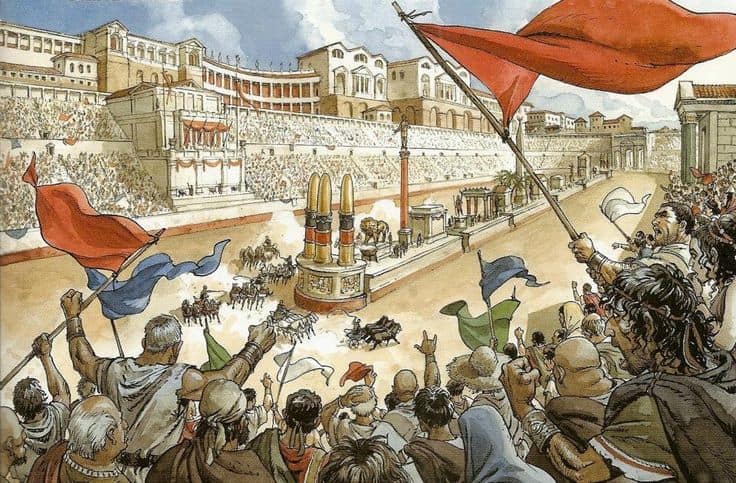Imagine the Byzantine Empire, one of the most powerful empires in world history at the time, being brought down by a riot. Not just any riot either, the Nika riots weren’t about race or class or poverty; they were about a chariot race. Tens of thousands of soldiers and civilians were killed and a huge portion of the great city of Constantinople was destroyed.
It is easy to look back and see the Byzantine Empire as weak at times, especially given that a Crusader army made a sort of improvised assault and took their capital, they were a weak and sad state when the Ottomans finally ended their empire, and they frequently had to pay off invaders or hide behind their walls.
But the Byzantines were among the most powerful and stable empires of the middle ages if we look over their whole history and account for their position as an economic powerhouse. So when we look at the Nika riots, it is important to note that they happened during the reign of Justinian the Great, the Emperor who, with the help of Belisarius, would bring the empire to its greatest extent. This makes the Nika riots more impressive, as the course of history would have been radically different had the riots ended differently.
Chariot Races: The World Cup, Super Bowl, and Stanley Cup Rolled Into One

People are passionate about sports, occasionally that passion spills out in the form of violence, even with the home team’s victory. It’s bizarre to the non-fan and occasionally ends in senseless tragedy. Just in the last decade, there have been several riots where the death tolls have ranged from about ten to as many as eighty.
The Byzantines in the 6th century CE were no different. Chariot racing was the only sport people really cared about and there were only four teams. Though they operated a little differently than “teams” in the modern sense, the Yellow, Red, Blue, and Green factions were the standard of the day, but at the time almost all the fans were devoted to either Blue or Green. More than just teams, they were almost like political parties mixed with gangs, affecting policy in the empire and holding huge sway with the common people, doling out charity and murder where it suited their interests.

Cheating, mainly sabotaging an opponent’s chariot, was fairly common and not despised as long as the cheater didn’t get caught. This led to spectacular chariot failures during the races and deaths occasionally occurred. It’s easy to see how such a violent and exciting sport could incite a riot in the fans. And indeed, small riots often occurred, with the occasional death and the execution of those deemed responsible.

